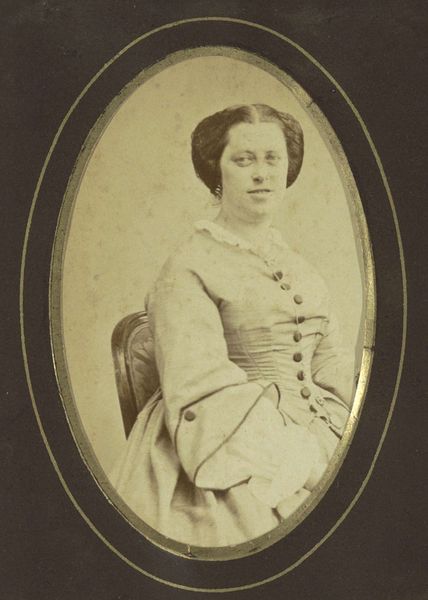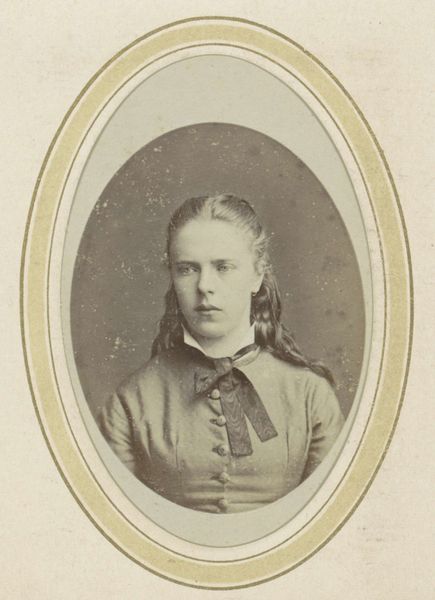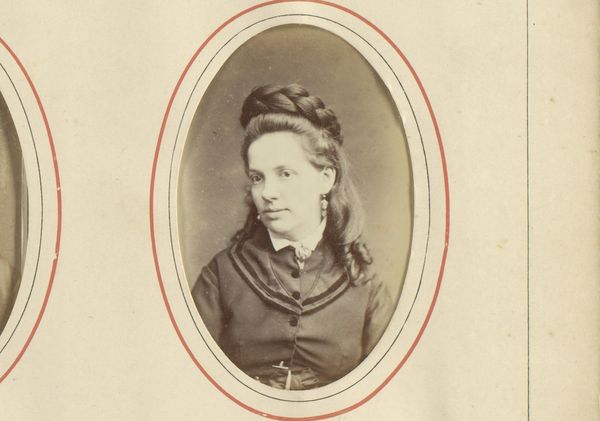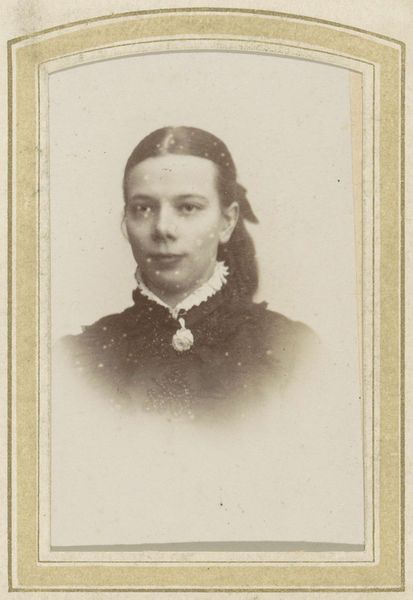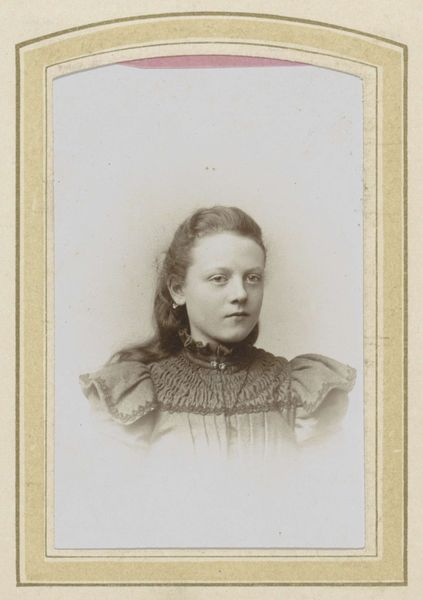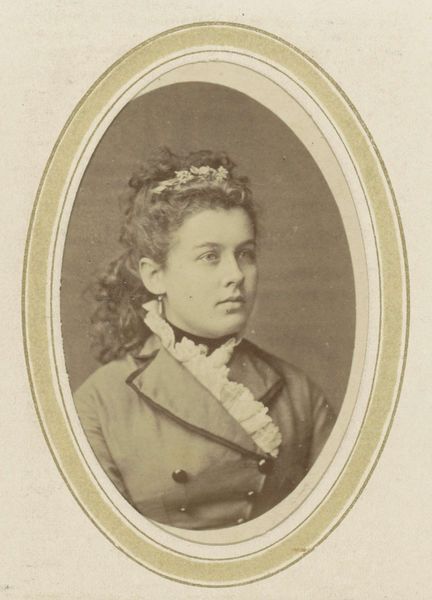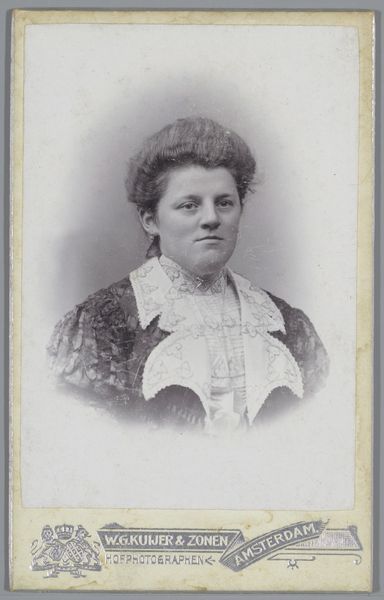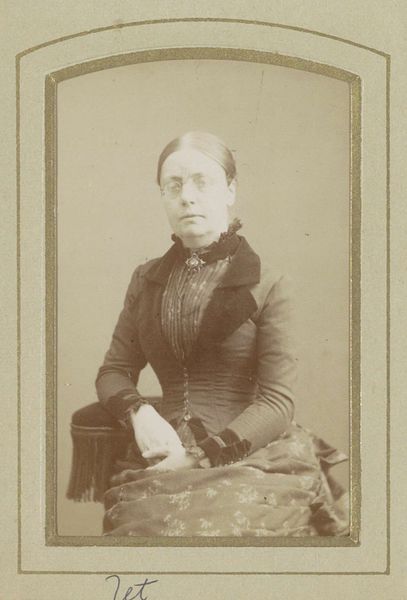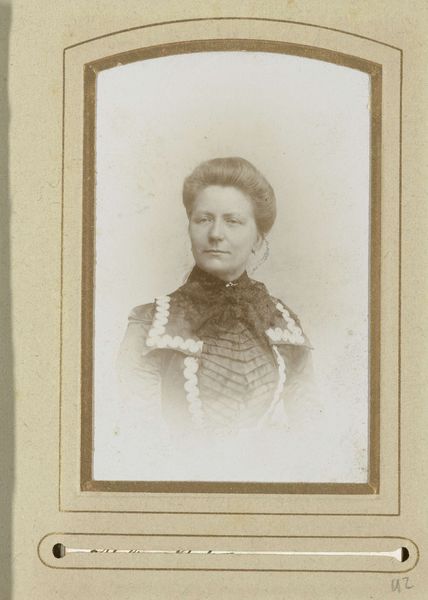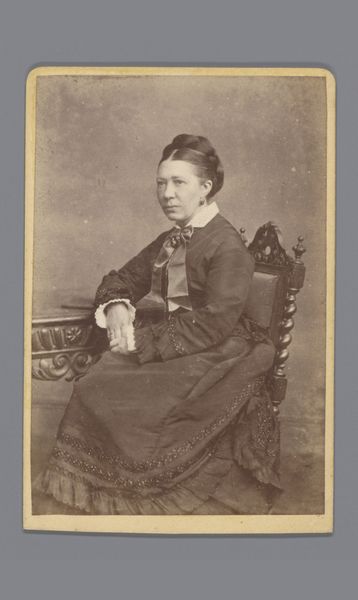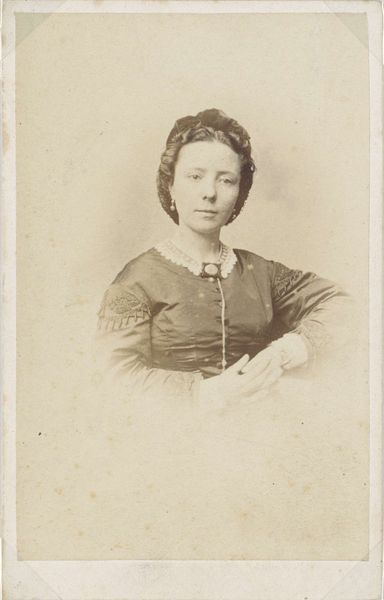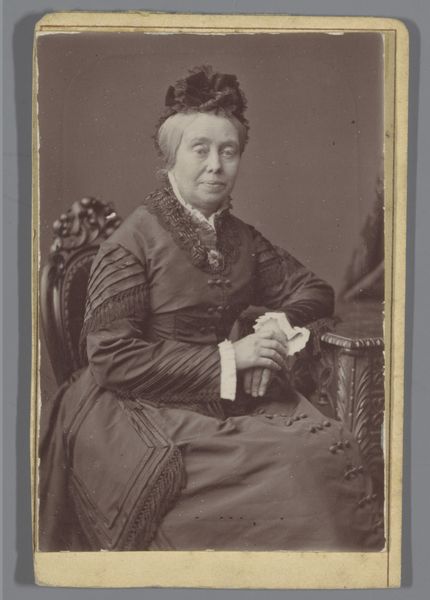
photography, albumen-print
#
portrait
#
photography
#
historical photography
#
albumen-print
Dimensions: height 83 mm, width 52 mm
Copyright: Rijks Museum: Open Domain
Curator: Looking at this “Portret van een vrouw,” a photograph attributed to Johannes Ephraim, dating sometime between 1867 and 1904, immediately conveys a strong sense of… austerity. Editor: I agree, there’s a somber quality, isn't there? Almost haunting, as if the woman is looking straight through the viewer, beyond her era into ours. Curator: It's interesting to consider the sitter's position in society during this era of photographic portraiture. Albumen prints, like this one, while becoming more accessible, were still significant events. Editor: Absolutely, these weren’t casual snapshots. Her formal attire, that delicate lace collar fastened with what seems to be an oval brooch, suggests a certain social standing. How does her apparent class and respectability impact your analysis? Curator: It adds layers, of course. Photography at this time was very much a bourgeois project, reinforcing specific notions of respectability, beauty, and societal norms. And how her gaze intersects with contemporary debates surrounding gender and representation is compelling. She defies any sort of stereotypical feminine frailty expected then. Editor: Do you think the rigid expectations might play into that directness, that lack of artifice in her expression? Perhaps even a quiet resistance to being overly beautified? Curator: Potentially, yes. It might reflect the sitter’s personality. In a society often forcing women into performative roles, this portrait subtly questions them. However, photographs like these often helped normalize colonial narratives and ideas of racial hierarchy. So who is given a photographic voice and how are key issues. Editor: That somber tone we sensed initially, it becomes much more loaded in this larger context. Seeing it now isn't just a glimpse into a woman’s life but into a web of societal structures she navigated. Curator: Exactly, art acts as a lens through which to understand both personal experience and its wider social and political resonances. Editor: Thinking about it all, I walk away with the sense that this image gives the woman, not power, exactly, but a certain kind of agency in her visual presence.
Comments
No comments
Be the first to comment and join the conversation on the ultimate creative platform.
